Wakesurfing
Wakesurfing is a thrilling water sport where riders surf on the surface of a wave created by a specially designed boat. Unlike wakeboarding, wakesurfers do not need to be towed into the wave; instead, they use the boat’s wake to propel themselves forward. Riders typically start by holding onto a tow rope attached to the boat and then gradually release it as they gain momentum, allowing them to surf freely behind the boat.
The sport requires balance, agility, and skill as riders maneuver on the wave using their body weight and the momentum of the water. Wakesurf boards are typically shorter and wider than traditional surfboards, providing stability and control on the smaller, more manageable waves created by the boat’s wake.
One of the unique aspects of wakesurfing is the close proximity to the boat, allowing for interaction between the rider and the passengers onboard. This creates a fun and social atmosphere on the water, making wakesurfing a popular activity for groups of friends and families.
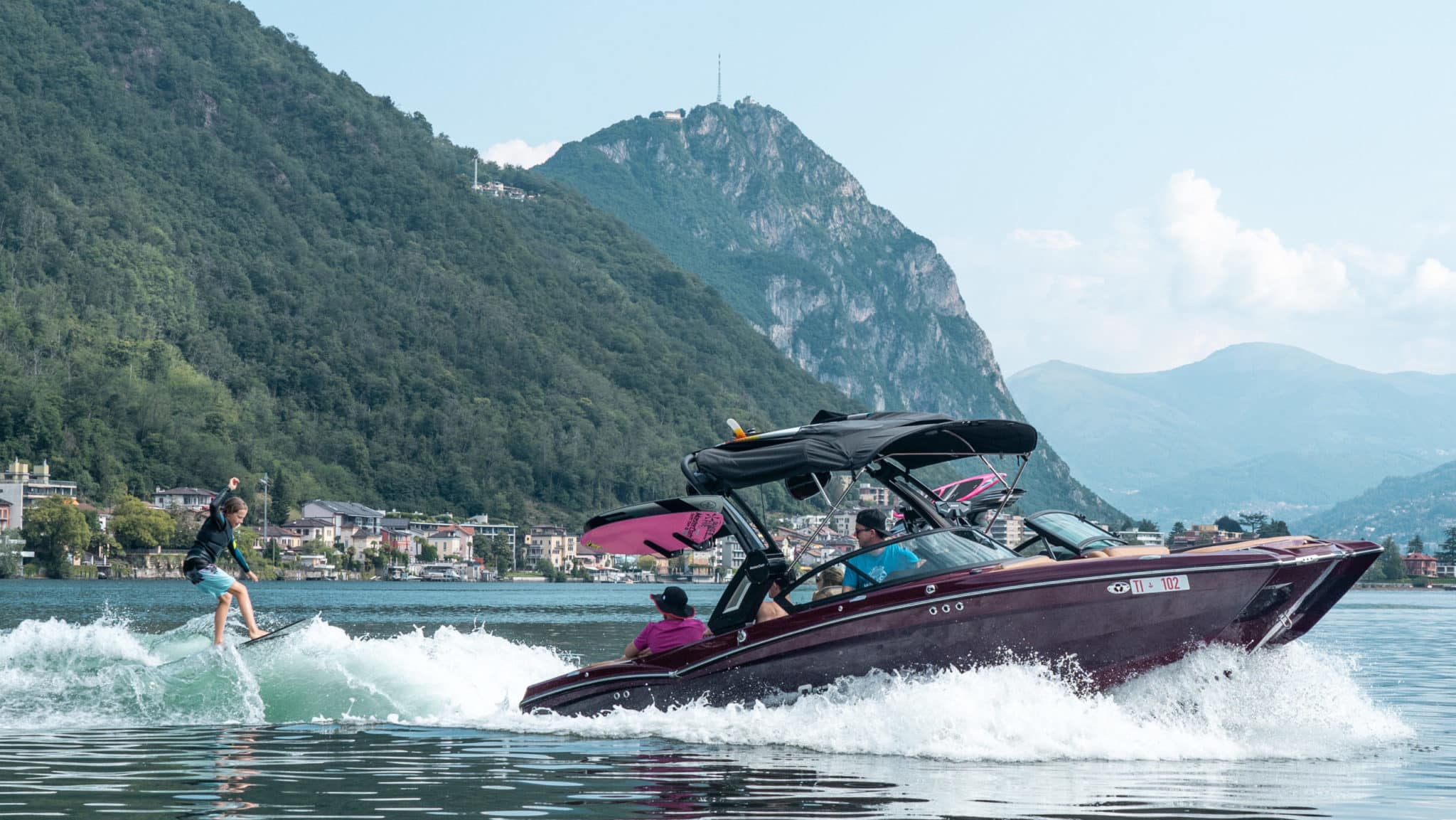
One lesser-known fact about wakesurfing is its origins. While modern wakesurfing gained popularity in the late 20th century, its roots can be traced back to the 1960s in Hawaii. Surfers began experimenting with riding the small waves created by boats, using them as a source of entertainment during downtime. This early form of wakesurfing laid the groundwork for the sport we know today, showcasing the creativity and ingenuity of surfers seeking new ways to enjoy the water.
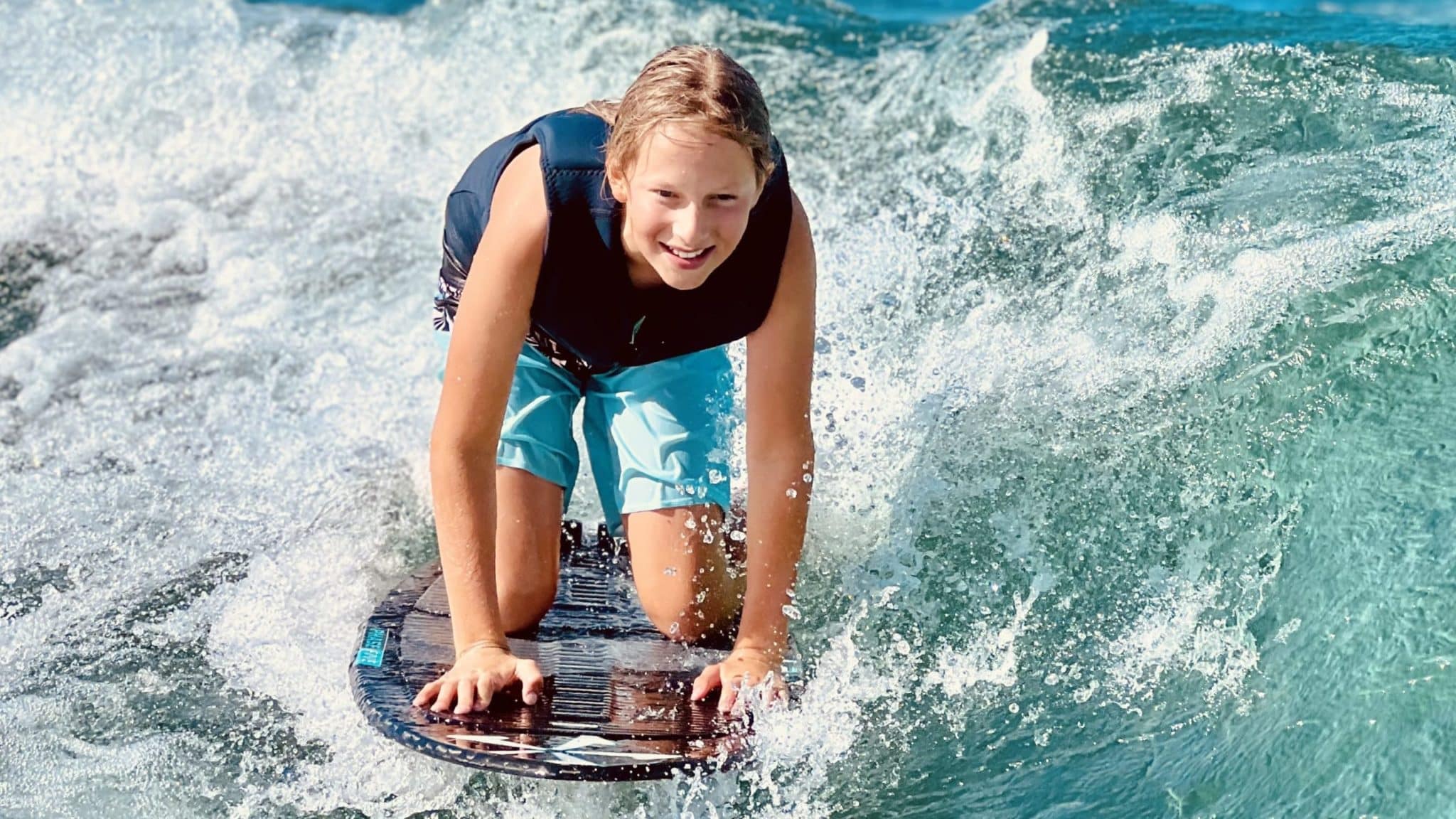
Exploring the variety: a guide to different types of wakesurf boards
In wakesurfing, there are several types of boards designed to suit different riding styles and skill levels.
Wakesurfing can be practiced on various types of surfaces, including wooden planks, parquet floors, doors, and more. This has indeed been done for advertising purposes.
During my training sessions, I primarily focus on practicing skim and surf styles, which are used in competition, in two different categories, as the executed maneuvers differ.
Additionally, I also practice longboard, bodyboard, and foil.
Skim style Boards:
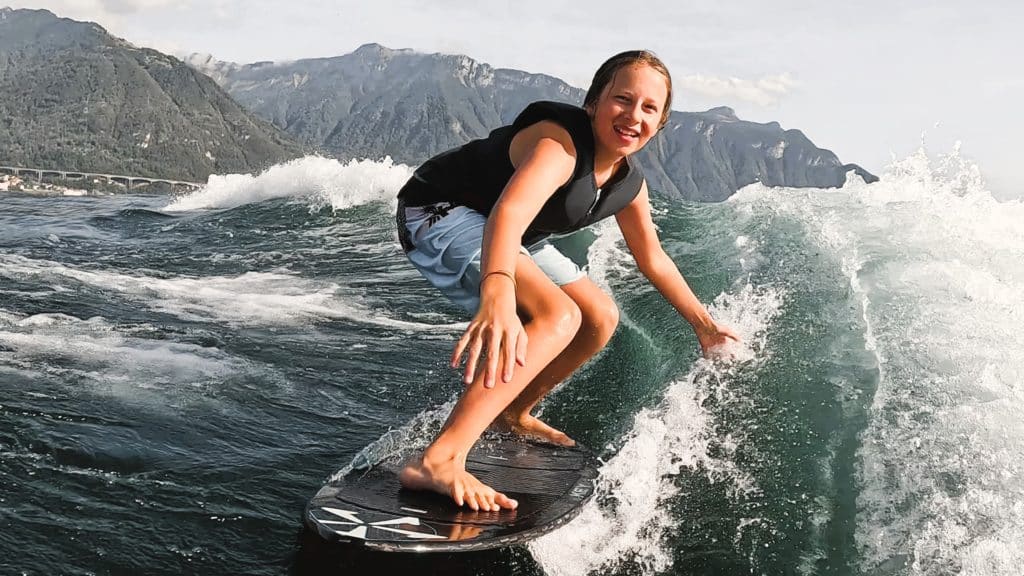
Skim style boards are thinner and more compact than surf style boards, with a flatter rocker profile and sharper edges. They are ultra-fast and highly maneuverable, usually without fins, allowing for quick turns, spins, and tricks on the wave. They give you the sensation of surfing on a bar of soap!
Surf style boards:
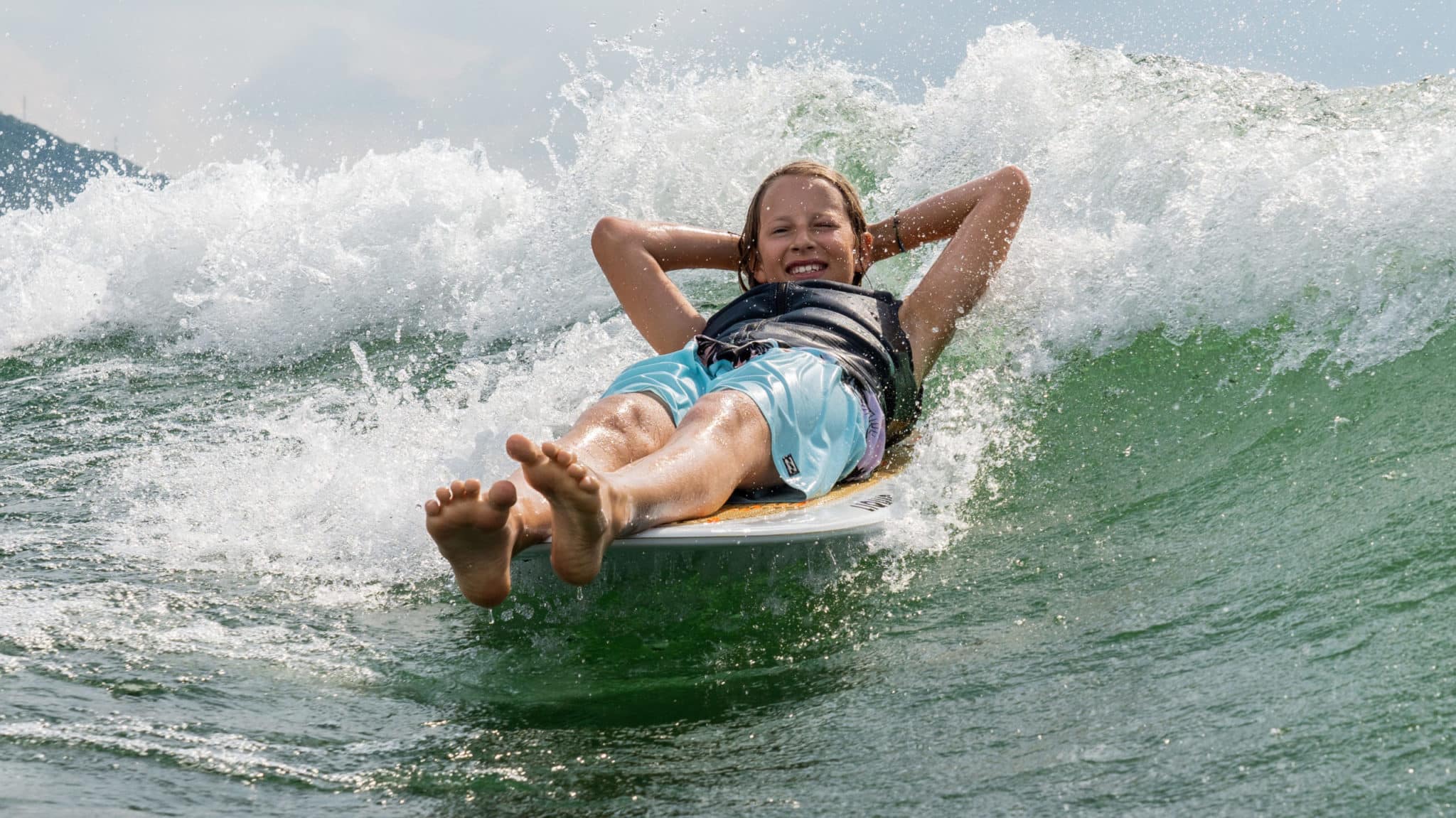
These boards closely resemble traditional surfboards, being larger and thicker compared to skim style boards. Typically equipped with large fins for added stability, they are favored by riders seeking a relaxed, surf-like experience.
Longboards:
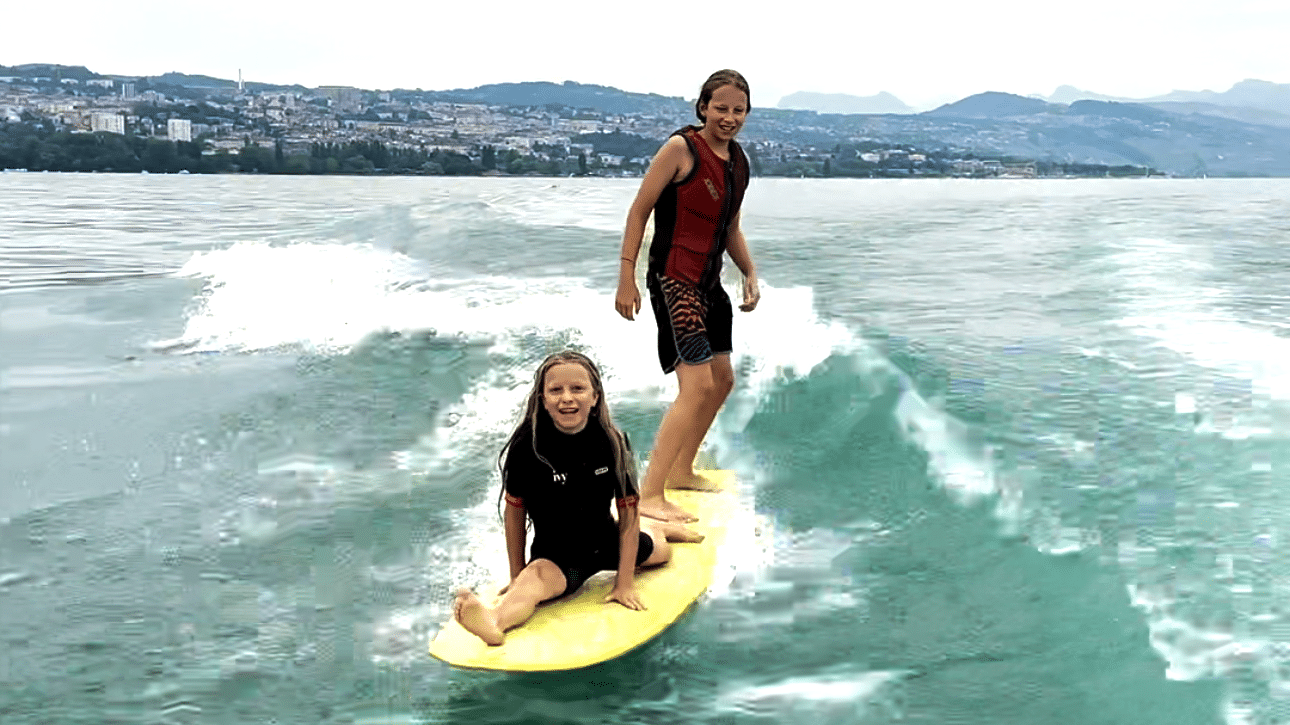
This fascinating sport is rarely practiced behind a boat. It is almost non-existent in the world of wakesurfing. Here, riders can execute maneuvers like walking the plank, dancing, and even performing splits!
Foils:
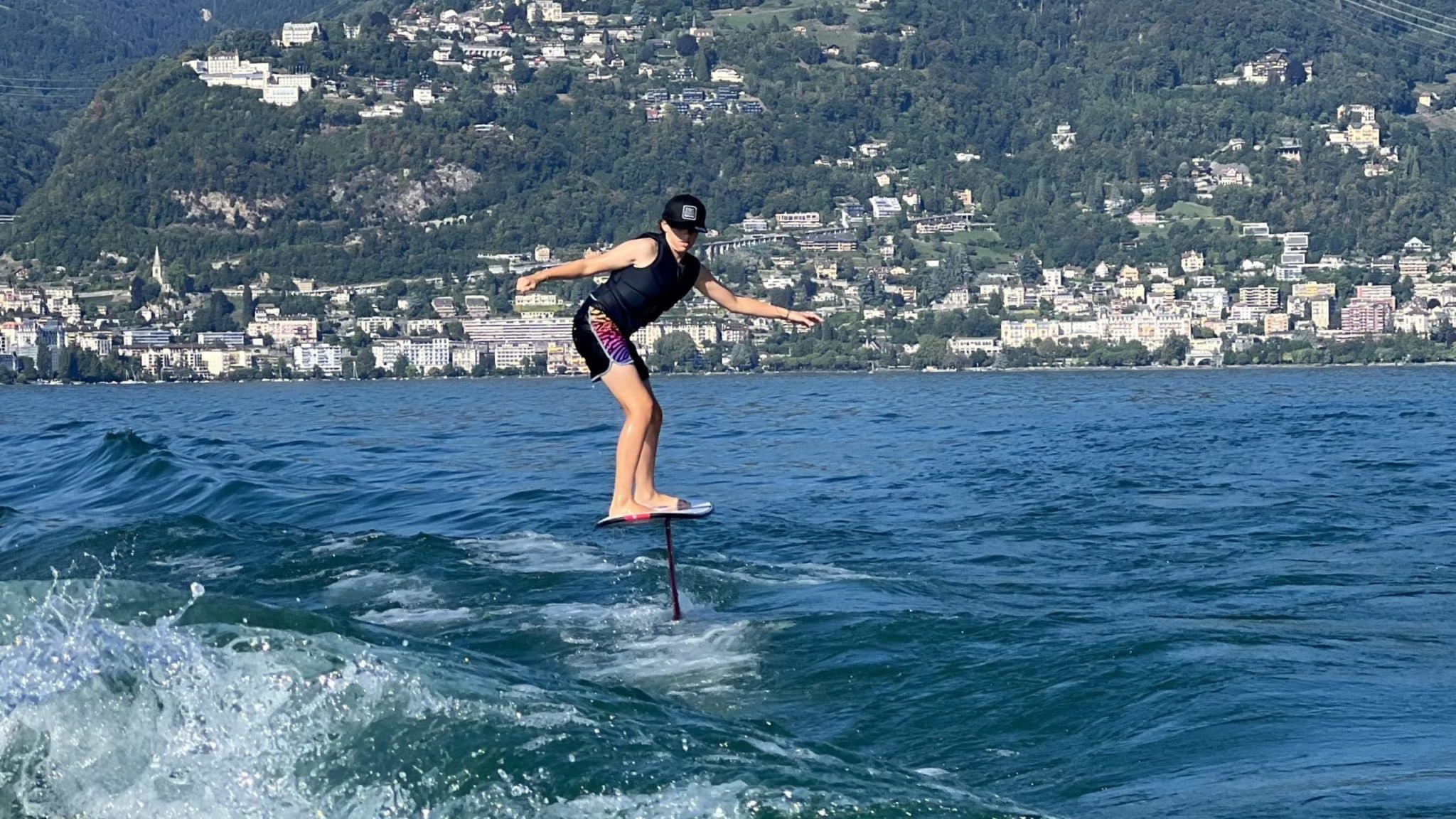
Wake foils, or hydrofoils, are a relatively new addition to the wakesurfing scene. These boards feature a hydrofoil attached to the bottom, which lifts the board out of the water as the rider gains speed. This creates a smooth, gliding sensation as the rider rides above the surface of the water, similar to flying.
Bodyboards:

A compact and pliable board… This familiar sight is a staple on beaches worldwide. But did you know that bodyboarding can also be enjoyed behind a boat?
Alaia boards:

Alaia boards are traditional wooden surfboards originating from Hawaii.
